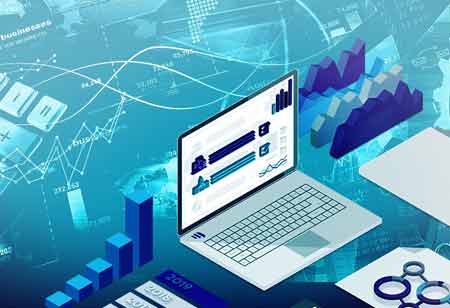THANK YOU FOR SUBSCRIBING
Be first to read the latest tech news, Industry Leader's Insights, and CIO interviews of medium and large enterprises exclusively from CFO Tech Outlook
THANK YOU FOR SUBSCRIBING

By
CFO Tech Outlook | Monday, September 26, 2022
Stay ahead of the industry with exclusive feature stories on the top companies, expert insights and the latest news delivered straight to your inbox. Subscribe today.
A fast-fix strategy does not provide the adaptability and resilience needed to thrive and remain relevant.
Fremont, CA: Remember those early epidemic days when nearly all of your company's activities had to get completed remotely and fairly immediately? Naturally, there was a drive to automate everything possible, including the mailroom, employee onboarding, and even the location and method of printing papers.
For a good reason, accounts payable (AP) dominated the automation discussion in the back office. Vendors and suppliers can almost immediately see when an AP process is inefficient, and no firm wants to damage these relationships.
While the push for AP automation was unquestionably positive, many businesses relied on band-aid remedies or pointed solutions in the belief that they would be sufficient until things returned to "normal." But, of course, with supply chain problems, the Great Resignation, geopolitical turmoil, and a pandemic that won't go away, all know that things will never be the same again.
A fast-fix strategy does not provide the adaptability and resilience needed to thrive and remain relevant. Instead, it may prevent the business from developing and changing and keep it in a state of inertia.
There are four essential characteristics needed for scalable, end-to-end automation that will maximize the benefits of AP digital transformation and lay the groundwork for resilience:
AP document intelligence
The automation solution must process any language or type of financial document from any source. Using multi-channel invoice capture, suppliers can utilize their chosen channel, whether it gets scanned, paper-based, XML or PDF. Artificial intelligence technology can comprehend invoice structure and locate the appropriate information regardless of format.
Electronic invoicing and self-service portal
In addition to being practical, the ability to create and receive XML bills is swiftly turning into a need as worldwide mandates to use electronic invoicing continue to gain traction. A self-service site improves the experience for suppliers by enabling them to monitor the status of invoices and payments.
Dynamic workflows
Another essential component for success is the capacity to control straightforward and intricate approval and exception procedures inside an AP process. The AP staff can increase efficiency, save money, and minimize errors when the user can quickly develop and change customized strategies for processing invoices, figuring invoice due dates and discount due dates, and reprioritizing and processing exceptions, duplicates, and cancellations.
ERP integration and a cloud platform
Using pre-built connections to link any AP automation solution with any financial management system forms the basis of a robust digital AP infrastructure. Validated data can be easily routed into any current ERP with out-of-the-box integration, saving time and money on bespoke interfaces. A cloud platform's quicker deployment, cheaper entry cost, decreased reliance on IT, 24/7 access, and support boost cost savings and ROI.
I agree We use cookies on this website to enhance your user experience. By clicking any link on this page you are giving your consent for us to set cookies. More info

However, if you would like to share the information in this article, you may use the link below:
www.cfotechoutlookapac.com/news/updating-invoices-and-payments-through-ap-automation-nid-1914.html



